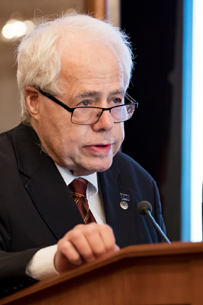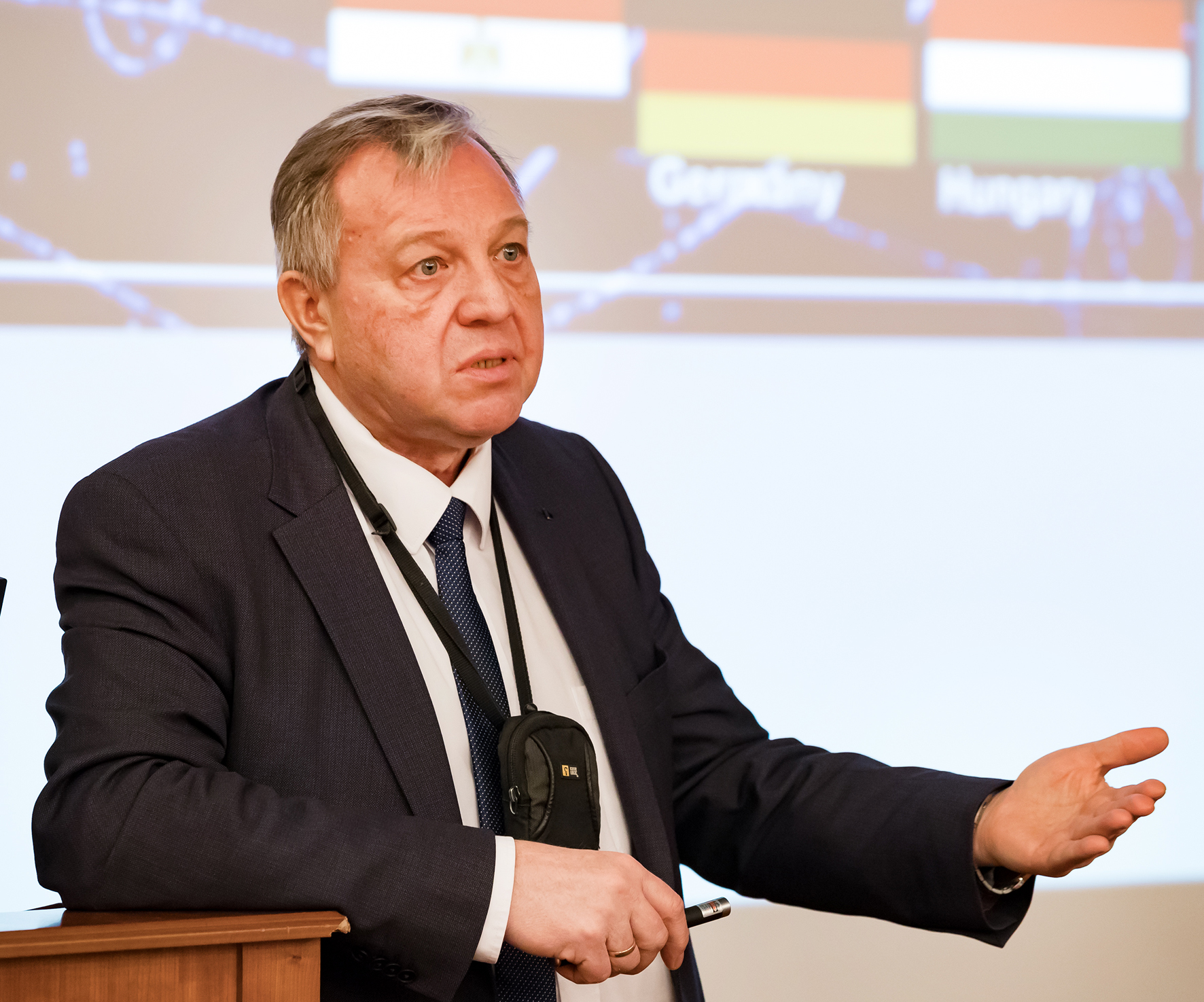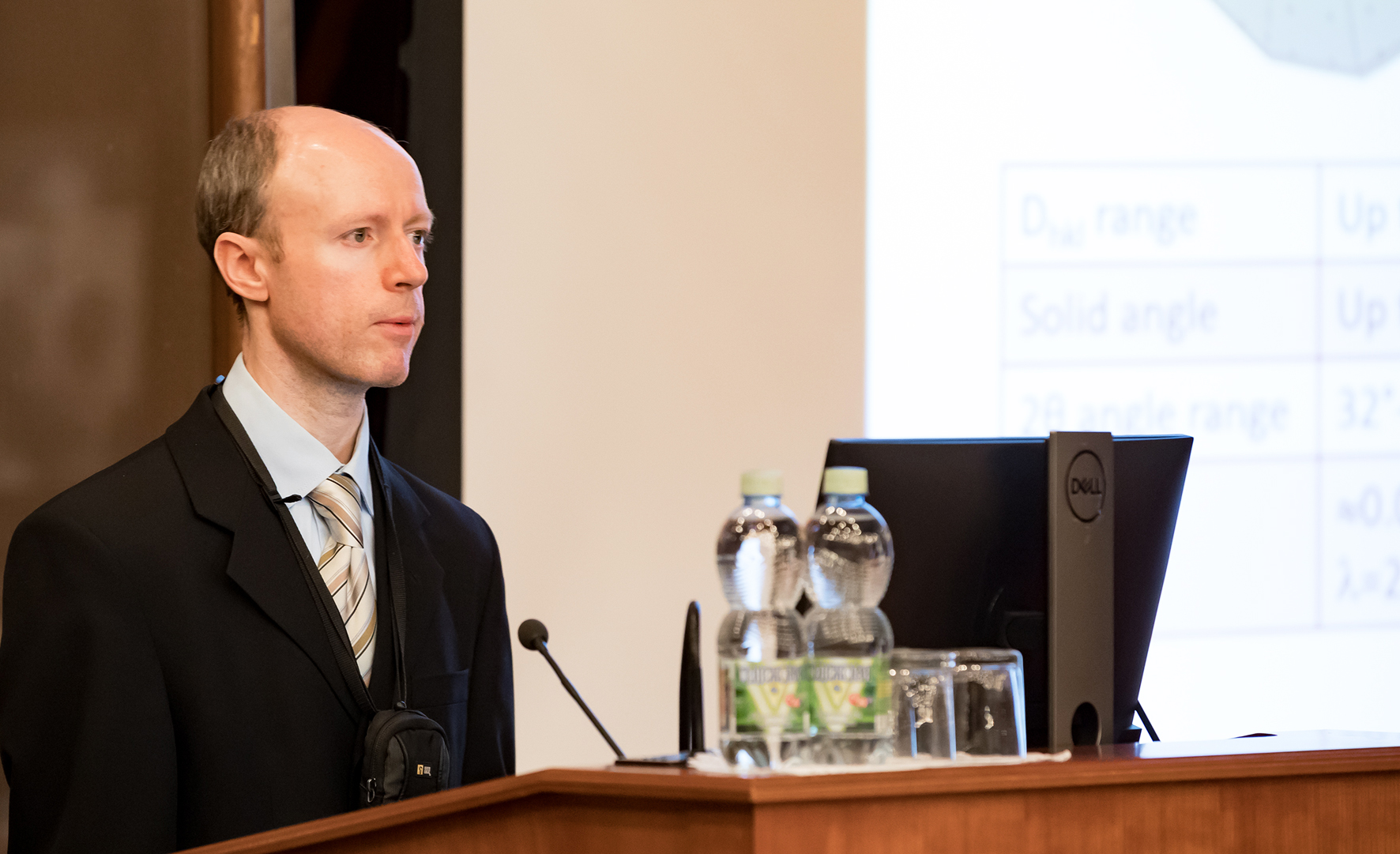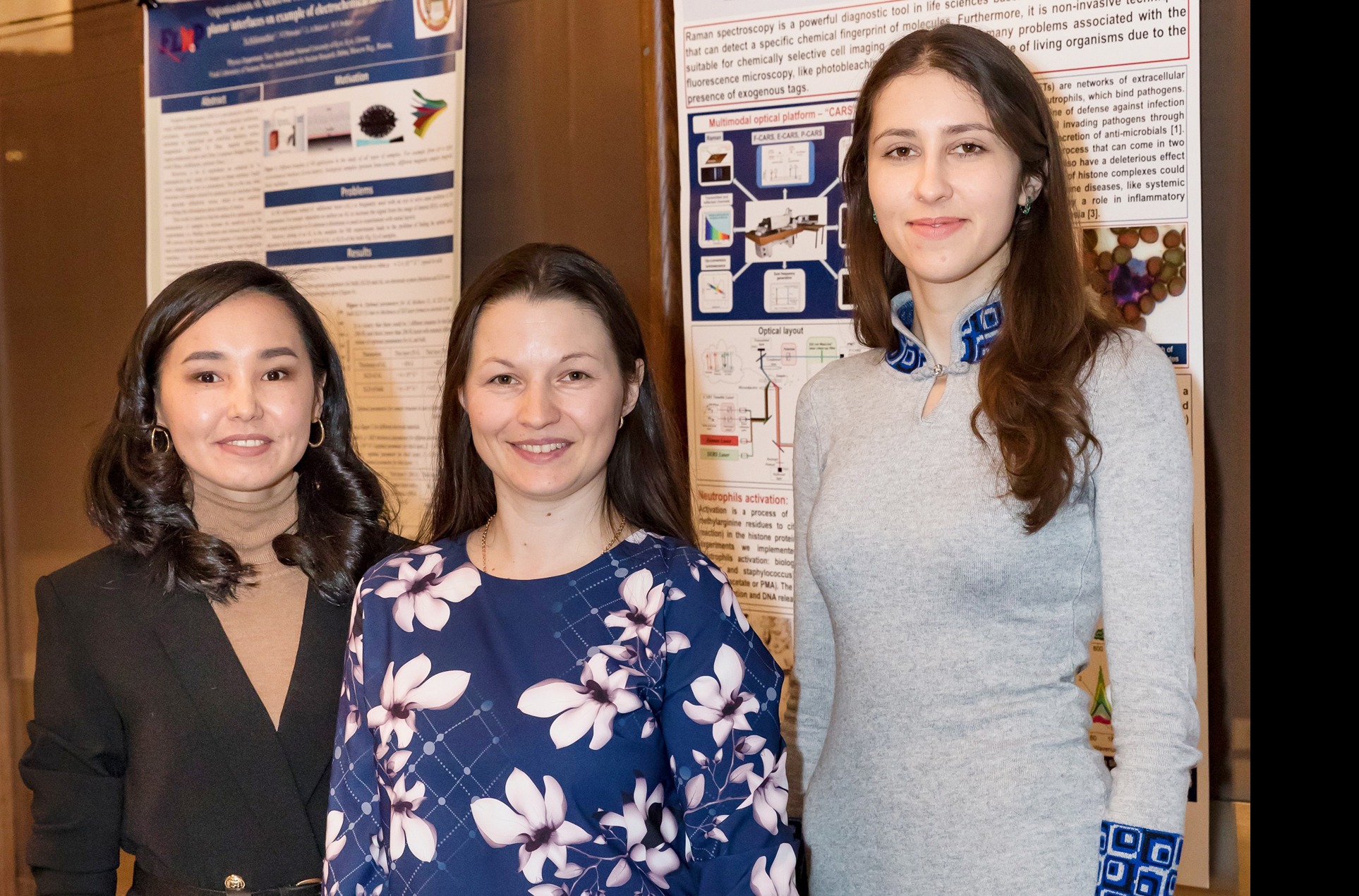Experts discussed new projects
News, 30 January 2020
On 20 – 21 January, the 51st meeting of the Programme Advisory Committee for Condensed Matter Physics of JINR was held. The agenda of the meeting was rich and included proposals for new projects, reports on concluding themes and scientific reports.
FLNP Director V. N. Shvetsov made a report on the concept for a new JINR neutron source and the recent agreement with Rosatom. The FLNP Director gave a short comment to Dubna journalists:
“At the end of last year, the final concept for our new source was chosen out of two offered to us based on research conducted by NIKIET. We have chosen the variant of a pulsed reactor similar to the IBR-2 facility but with other fuel and a little bit different operating principles. This is the main thing. The equally important events were the first meetings with representatives of the key organizations of Rosatom that would take part in the development of fuel for the new source as far as it is the most complex and longest process and this is the basis for the creation of the new facility. These were very positive meetings. The Roadmap I have presented here is the result of our meetings. It was developed by our partners from Rosatom. Against this background, a joint Rosatom-JINR STC meeting was organized. We even planned to approve the Roadmap at the STC meeting but probably the leaders of the parties were not ready yet. Nevertheless, we will move forward because participants of the process are ready for this. We work in this direction.
I mentioned in my report the stages of the project, and the first one is 2023 when we are supposed to make a draft project that will include all the components. The general designer will also take part in this work and will estimate the cost of the construction of all the buildings, the production of equipment, its assembling, i.e. the full cost of the development of the new facility. After that, we will be supposed to make a decision in the Institute whether to implement the project or not.”
“What is the difference between the new neutron source and the IBR-2 facility?” a PAC member Pavel Aksenov (NRC “Kurchatov Institute”) asked.
“The main difference is the density of the neutron beam: it will an order higher in momentum and much more higher in average. And this is a lot, and we even cannot foresee all possible physical exits from this intensity increase. We work on it, include it in the White paper being drafted now. It is a new level of the study of biological structures and protein molecules that cannot be currently achieved anywhere and by anybody at neutron sources because of the lack of neutrons.”
“Can we expect co-financing from Rosatom as it was during the IBR-2 modernization?”
“The financing has not been discussed yet; the times are quite different. I should remind that the IBR-2 modernization was financed by Rosatom until the end of the 1990s, and then co-financing was finished. There is a restrained optimism about the signing of this agreement. There is a feeling that our corporation, a successor of the Ministry that was once our home, started to realize the necessity to support research, which is fundamental to a certain extent, to grant its further development. They start making financial contributions to these issues, there are several signs of it. We cooperate with the Institute of Physics and Power Engineering (Obninsk) on data for nuclear physics. We hope that this activity will also receive support but there are no specific agreements yet.”
“Is it possible that the new facility will already operate and the IBR-2 will be still working?”
“It is our dream and our desire to achieve it. Just like it was with the IBR-30 and the IBR-2 when physicists studying both nuclear physics and condensed matter physics worked at the IBR-30 and created tools at the IBR-2 in their free time, in evenings, at nights. When the IBR-2 started operating, the IBR-30 continued its work for 18 years. It is an ideal situation. Otherwise… I do not want to discuss any other variants because they will be bad for us and it will be difficult to preserve the team of specialists.”
“Is not a new territory for the new facility necessary?”
“We are still planning to stay within the DLNP JINR site and we are taking necessary steps to preserve the size of the buffer zone we have now.”
D. P. Kozlenko presented the main scientific results of the past year: :
“We completed the full volume of work last year. As usual, about 200 applications for experiments were submitted, we have our own research plans that is why many interesting, diverse studies were carried out. In my opinion, if we talk about functional materials that are promising for the development of various kinds of technologies, it is necessary to mention so-called alloys with giant magnetostriction. These are substances in which linear dimensions undergo changes under the influence of the magnetic field. It turned out that in mixtures of iron with non-magnetic material gallium with a relatively small concentration of iron – about 30 % – magnetostriction reaches the highest values. The question was raised: why does it happen? We looked for the answer to this question jointly with the National Technical University MISIS. We studied isothermal phase transitions: properties of these substances depend on what thermodynamic conditions are used for their synthesis. It was found out that if, for example, these materials are held at a temperature of about 400 о C, then a complex sequence of structural phase transitions, rearrangement of atoms take place in it, and their properties undergo considerable changes. All these results may help understand the microstructural mechanisms of properties of these materials.
We continued research on the properties of the substances under extreme conditions. Magnetite, an iron oxide, was an interesting object of research. It is one of the fundamental compounds that plays an important role in the development of both our joint technologies and fundamental concepts of condensed matter physics. This is the first magnetic material people have learnt about. Ancient people made their compasses out of magnetite. Now, it is widely used in some technologies; it has some interesting physical properties the study of which has considerably helped the development of modern ideas in the field of condensed matter physics. Abnormal behaviour of its properties under the impact of high pressure has been recently found out: there were sharp changes in electronic, magnetic, structural properties, resistance and other properties also changed. The question was raised: why does it happen?
We carried out a series of joint experiments. A part of the work was conducted at our reactor with the use of neutron diffraction; another part was made at the source of synchrotron radiation in Grenoble. We managed to set up the full magnetic, structural, electronic phase diagram of this compound. We found out that the magnetic structure and magnetic properties of the substance drastically change after the phase transition. We determined the behaviour of fundamental constants, such as, for example, the temperature of the magnetic transition and others, depending on the pressure and temperature. We built a phase diagram that may be used to explain phenomena observed by other researchers.
Moreover, research was conducted in the field that we had actively developed recently – chemical current sources. In particular, contacts of solid electrodes and liquid electrolytes are actively studied in addition to research on the material of electrodes in volume. We studied what processes take place in them: an intermediate phase of the solid electrolyte is formed at which lithium settles. Interestingly, lithium settles inhomogeneously that greatly affects the performance of batteries. It has been shown that if the electrolyte concentration is increased, the number of this heterogeneities may be decreased. These results are important to electrochemists from the MSU jointly with whom this work is carried out to optimize modern chemical current sources.
Among applied works, I would like to note active research on new light magnesium alloys. It is a promising kind of alloy used in the automotive industry and the space industry. It is very strong but it has not so high plasticity and formability. Modern techniques are used to overcome these shortcomings. For example, users change the trajectory of deformation when produce parts. Model experiments were carried out at the reactor, and the dependencies of deformation and inner stresses were obtained when the trajectory changed from compression to tension. The obtained results will help understand the processes occurring in these alloys and how to optimize them.
Moreover, I may highlight the study of a piece of the Chelyabinsk meteorite among applied works. It fell a fairly long time ago, in winter 2013. It was the strongest collision with a body of the extraterrestrial origin in the past time after the famous Tunguska meteorite fell in 1908. The study of such objects, of the phase composition, is very important for the future modelling, forecasting of processes occurring during the collision, of damage they can make. We studied its phase composition using the methods of neutron diffraction, radiography, tomography, optical methods, i.e. the Raman spectroscopy. We found the kamacite mineral in it, it is an alloy of iron and nickel. Thus, we clarified the composition of the meteorite.”
 After the PAC meeting ended, the first question to its Chairman Denes Nagy was about a considerable activity of the PAC members at the meeting:
After the PAC meeting ended, the first question to its Chairman Denes Nagy was about a considerable activity of the PAC members at the meeting:
“Yes, you are right. The last meeting in June was more calm, routine. This time, there was no routine at all. There were many significant reports, and the first of them was about the preliminary decision on the new neutron source of JINR that will be created as a pulsed reactor. You know that the use of pulsed reactors is a long-standing tradition of Dubna, so it was decided to continue it after the IBR-2 reactor will end its term. The IBR-3 should be built and brought into operation by that time for research to be continued. The new source will be more intense than the existing one. This report by V. N. Shvetsov may have been the most important, and the PAC members supported him. Nevertheless, we paid special attention to the fact that the update problem should be carefully analyzed for both facilities. Another important report was about the creation of two new spectrometers of neutron inelastic scattering at the IBR-2 facility. The report was made by D. Chudoba. We are waiting for a more detailed presentation at the next PAC meeting. The creation of the second spectrometer of inelastic scattering is scheduled for some time after the creation of the first one. The exact time has not been decided yet. We also supported the preliminary project.”
“There were more scientific reports than usual – five – at the meeting. Is their number regulated?”
“Yes, this time we faced this problem. Frankly speaking, it was a challenge to choose among them because they contained many offers and represented all the fields considered by the PAC for Condensed Matter Physics. And it includes not only neutron physics. The report on the Raman spectroscopy was interesting. It is a fantastic method with the sensitivity level of atoms and molecules. We were also interested in the reports by theoreticians, their contribution to applications for heavy ion physics which is not also the field of neutron physics. So, that was the way we included five scientific reports in the PAC programme. It is too many, and in the resolution, we decided to limit their maximum number to three. This number allows to listen and discuss them carefully.”
“Were the PAC members satisfied with the results presented at the poster session this time?”
“Yes, they were. Last time we criticized it because many presented reports were of a low level, and we chose only one among them. This time 15 brilliant poster reports were presented, truly excellent works. And it was a challenge to choose the best ones. It was difficult to choose the winner and two almost equal presentations for the second and the third places.”
“Was there a kind of a debate when the agenda of the next PAC meeting was discussed?”
“It is a common situation. Some themes are proposed by the members of the FLNP Directorate, some of them are made by the PAC members. The next meeting will be also very interesting, and there will be reports on the new neutron source IBR-3 presented by FLNP leaders and the working subgroup on condensed matter physics in the frames of the drafting of the JINR strategic development plan.”
FLNP Deputy Director O. Culicov introduced the journalist of our newspaper to a new PAC member Shen Kennedy and helped with the translation:
“I am very pleased to be invited to the PAC as a member as far as I have been engaged in the development of neutron tools for more than 40 years, for the whole life, in fact. I worked in Asia and the Pacific region and in Western Europe. I have excellent contacts with North and South Americas. Now, I head the ESS project division (Lund, Sweden). I am a Deputy Director for Science in the ESS. I am sure that Russia plays a significant role in the field of neutron scattering. You have a good background in the field. It is clear that it was difficult to maintain the entire scientific infrastructure in Dubna in recent decades. So, it is a pleasure to see what is happening here now, in what direction you move, especially since the development of neutron scattering methods in Russia is now associated with Dubna.
I see the efforts made, your research is conducted at a reliable source, you have the user policy open to the whole world. It is a pleasure to see all this. In particular, I am impressed by ambitious plans of the Institute’s leaders to create a new neutron source. I am well-aware of all the difficulties of this task as far as I took part in the creation of the neutron source in Australia, and now I participate in the ESS project in Europe. I think that the social and economic benefits of this project for future generations will be significant, and I can only praise the JINR Directorate for their intent to launch such an ambitious project. I also highly appreciate the Directorate for its openness and willingness to listen to advice.”
The winners of the poster session, in which young FLNP staff members took part, are Inga Zinkovskaya with her poster “Neutron activation analysis as a tool for tracing the accumulation of silver nanoparticles in tissues of female mice and their offspring”, Asel Nazarova with the report “Synthesis and study of core-shell magnetic nanoparticles for bioapplications” and N. M. Belozerova with the presentation “High-pressure studies of the internal structure and atomic dynamics of pharmaceutical compounds”.
Olga Tarantina, JINR Weekly Newspaper
Photos by Elena Puzynina



